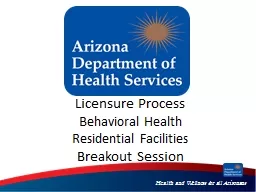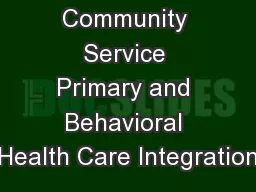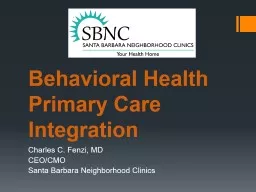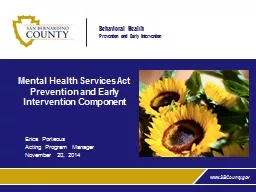PPT-BEHAVIORAL HEALTH – WHY IT MATTERS AND
Author : bitsy | Published Date : 2023-07-09
HOW SAMHSA CAN HELP Pamela S Hyde JD SAMHSA Administrator 2012 National Conference on Health Statistics Washington DC August 8 2012 BH PROBLEMS COMMON amp OFTEN
Presentation Embed Code
Download Presentation
Download Presentation The PPT/PDF document "BEHAVIORAL HEALTH – WHY IT MATTERS AN..." is the property of its rightful owner. Permission is granted to download and print the materials on this website for personal, non-commercial use only, and to display it on your personal computer provided you do not modify the materials and that you retain all copyright notices contained in the materials. By downloading content from our website, you accept the terms of this agreement.
BEHAVIORAL HEALTH – WHY IT MATTERS AND: Transcript
Download Rules Of Document
"BEHAVIORAL HEALTH – WHY IT MATTERS AND"The content belongs to its owner. You may download and print it for personal use, without modification, and keep all copyright notices. By downloading, you agree to these terms.
Related Documents














